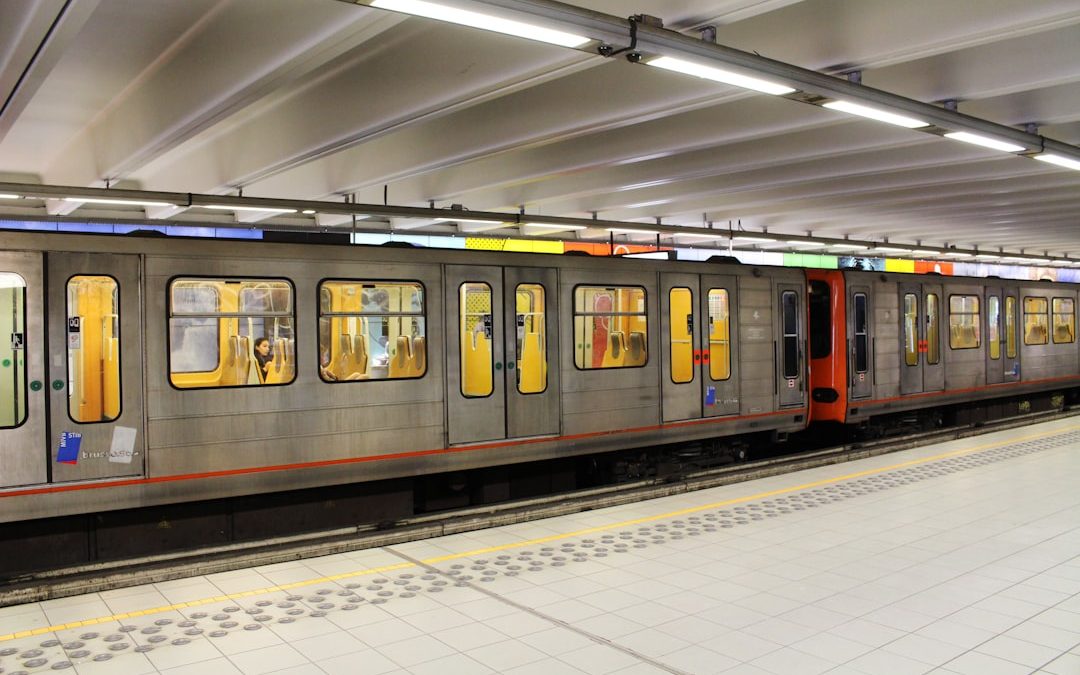When you embark on a journey through a new city, understanding the public transportation system is crucial. Each city has its own unique network of buses, trains, trams, and subways, and familiarizing yourself with these options can save you time and money. Start by researching the various modes of transport available in your destination.
You can often find this information on the city’s official transportation website or through travel blogs that provide insights from locals. Additionally, consider the coverage area of the public transportation system.
Some cities have extensive networks that reach far into suburban areas, while others may be more limited. Knowing where you can go and how to get there will help you plan your itinerary effectively. Look for maps that outline the routes and stops, and take note of any transfer points where you might need to switch from one mode of transport to another.
This foundational knowledge will empower you to navigate the city with confidence. Check out our Women’s Group Trips!
Key Takeaways
- Research the public transportation system to understand the available options and routes in the area.
- Familiarize yourself with the ticketing system to avoid confusion and delays when purchasing tickets or passes.
- Learn the routes and schedules to plan your journey and avoid getting lost or missing your transportation.
- Understand the etiquette and cultural norms to respect the local customs and make your journey more pleasant for yourself and others.
- Utilize maps and apps for navigation to easily find your way around and make informed decisions about your route.
Familiarize Yourself with the Ticketing System
Once you have a grasp on the public transportation system, the next step is to understand the ticketing process. Different cities employ various methods for purchasing tickets, ranging from physical tokens to mobile apps. Take the time to explore how tickets are sold in your destination.
Some systems may require you to buy a ticket before boarding, while others allow you to pay as you enter or exit. Familiarizing yourself with these nuances will prevent any last-minute confusion. Moreover, consider the types of tickets available.
Many cities offer single-ride tickets, day passes, or multi-ride cards that can save you money if you plan to use public transport frequently. Research any discounts that may apply, such as student or senior fares. If you’re traveling with a group, inquire about family passes or group rates.
Understanding these options will not only help you budget your trip but also enhance your overall experience by allowing you to explore more freely.
Learn the Routes and Schedules
With a solid understanding of the ticketing system in place, it’s time to delve into the routes and schedules of the public transportation network. Each mode of transport will have its own set of routes, and knowing which ones connect to your desired destinations is essential. You can often find route maps at stations or online, which will help you visualize how to get from point A to point B.
Schedules are equally important; they dictate when you can expect your ride to arrive. Some systems operate on a strict timetable, while others may have more flexible schedules. Pay attention to peak hours when services may be more crowded and less frequent.
If you’re planning to travel during off-peak times, you might enjoy a more relaxed experience. Additionally, keep an eye out for any service alerts or changes that could affect your travel plans. Being informed about routes and schedules will enable you to navigate the city efficiently and avoid unnecessary delays.
Understand the Etiquette and Cultural Norms
Every city has its own set of unwritten rules when it comes to public transportation etiquette. Understanding these cultural norms can make your experience more pleasant and respectful towards fellow passengers. For instance, in some places, it’s customary to give up your seat for elderly passengers or those with disabilities.
In others, maintaining a quiet demeanor is appreciated, especially during rush hours when the trains or buses are packed. Moreover, be mindful of personal space and noise levels. While some cities may embrace a more social atmosphere on public transport, others may expect silence or minimal conversation.
Observing how locals behave can provide valuable insights into what is considered acceptable. By adhering to these norms, you not only show respect for the local culture but also contribute to a more harmonious environment for everyone traveling together.
Utilize Maps and Apps for Navigation
In today’s digital age, utilizing maps and navigation apps can significantly enhance your public transportation experience. Many cities have dedicated apps that provide real-time information about routes, schedules, and even delays. Downloading these apps before your trip can give you an edge in navigating the system efficiently.
They often include features like route planners that allow you to input your starting point and destination, providing step-by-step directions. In addition to official apps, consider using general navigation tools like Google Maps or Citymapper. These platforms can offer alternative routes and modes of transport based on your preferences, whether you prefer walking, biking, or taking public transit.
Familiarizing yourself with these tools before your journey will help you feel more at ease when exploring unfamiliar areas. With a reliable map or app in hand, you can confidently venture out and discover all that your destination has to offer.
Be Aware of Safety and Security Measures
Safety should always be a priority when using public transportation. Each city has its own safety protocols and measures in place to protect passengers. Familiarize yourself with these guidelines before boarding any vehicle.
For instance, some systems may have security personnel present at stations or on trains, while others rely on surveillance cameras for monitoring. Additionally, be aware of your surroundings while traveling. Keep your belongings secure and avoid displaying valuables that could attract unwanted attention.
If you’re traveling late at night or in less crowded areas, consider sitting near the driver or in well-lit sections of the vehicle. Trust your instincts; if something feels off, don’t hesitate to change your seat or alert staff members if necessary. By staying vigilant and informed about safety measures, you can enjoy a worry-free experience on public transportation.
Ask for Help When Needed
Navigating a new public transportation system can be daunting at times, but remember that it’s perfectly acceptable to ask for help when needed. Whether you’re unsure about which bus to take or need assistance with ticketing, don’t hesitate to approach staff members or fellow passengers for guidance.
If language barriers exist, consider using translation apps or carrying a phrasebook with essential phrases related to transportation. This can make communication easier and help you get the assistance you need without feeling overwhelmed. Embracing this willingness to seek help not only enhances your travel experience but also fosters connections with locals who may share valuable tips about their city.
Stay Calm and Flexible
Finally, one of the most important aspects of using public transportation is maintaining a calm and flexible attitude throughout your journey. Delays and unexpected changes are part of the travel experience; how you respond to them can significantly impact your overall enjoyment. If a train is delayed or a bus route changes unexpectedly, take a deep breath and reassess your options rather than letting frustration take over.
Flexibility is key; sometimes the best experiences come from unplanned detours or changes in plans. Embrace spontaneity by exploring new neighborhoods or attractions that you might not have considered initially. By staying calm and adaptable, you’ll not only navigate public transportation more effectively but also create lasting memories during your travels.
In conclusion, mastering the public transportation system in any city requires research, preparation, and an open mind. By understanding the intricacies of ticketing, routes, etiquette, safety measures, and available resources like maps and apps, you’ll be well-equipped for an enjoyable journey. Remember that asking for help is always an option and that maintaining a calm demeanor will serve you well in any situation.
With these strategies in mind, you’re ready to explore new destinations with confidence and ease.
If you’re planning a trip to Vietnam, you may also find the article “Navigating Vietnam: A Guide to Transportation in Southeast Asia” on over30andoverseas.com helpful. This article provides tips and advice on how to get around the country using various modes of transportation. Whether you’re traveling to Vietnam or Dubai, the website over30andoverseas.com offers valuable resources for navigating public transportation in foreign countries with confidence. Additionally, if you’re heading to Dubai, check out the article “Getting Around Dubai: A Guide to Public Transportation” on over30andoverseas.com for tips on using the city’s efficient public transportation system.





